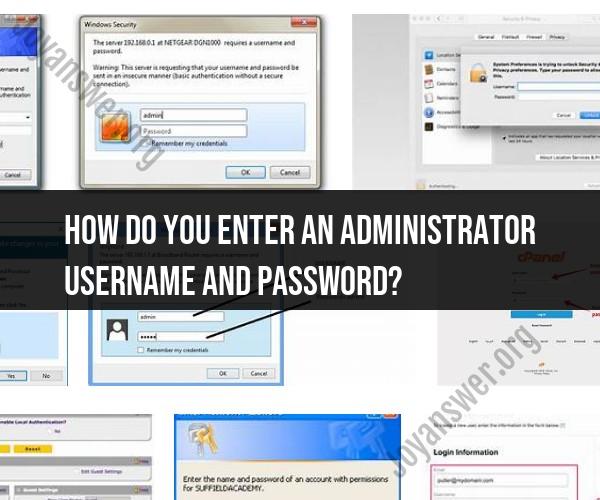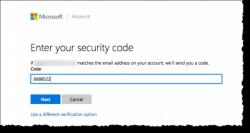How do you enter an administrator username and password?
Navigating administrator credentials, including entering a username and password, is an essential aspect of accessing and managing various systems, software, and devices. Here's a guide on how to navigate administrator credentials:
1. Usernames and Passwords:Administrator credentials typically consist of a username and a password. The username identifies you as a legitimate user, and the password is the secret code that verifies your identity.
2. Accessing Systems:Entering administrator credentials is required to access various systems, software applications, and devices, especially those that contain sensitive or critical data. This includes:
- Operating Systems: To log in to your computer or server.
- Network Devices: To access routers, switches, and other networking equipment.
- Software Applications: To access and manage software with administrative privileges.
- Databases: To manage databases or perform administrative tasks.
- Online Accounts: To access administrative controls for online services.
3. Security Considerations:Administrator credentials provide high-level access, so it's essential to ensure their security:
- Strong Passwords: Use strong and unique passwords that include a mix of uppercase and lowercase letters, numbers, and special characters.
- Two-Factor Authentication (2FA): Enable 2FA whenever possible to add an extra layer of security.
- Regular Updates: Change passwords periodically to minimize the risk of unauthorized access.
- Credential Management: Store credentials securely and avoid sharing them with unauthorized individuals.
4. Entering Administrator Credentials:The steps to enter administrator credentials depend on the system or software you're accessing:
Operating System (Windows):
- On the login screen, enter your username.
- Enter your password.
- Optionally, choose whether to remember the password.
Network Devices (Routers, etc.):
- Access the device's web interface using a browser.
- Enter the default or previously set username and password.
- Change default passwords for security.
Software Applications:
- Open the application.
- If prompted, enter the administrator username and password.
- Some applications may have separate administrator login screens.
Online Accounts:
- Go to the service's login page.
- Enter your administrative username and password.
5. Forgotten Passwords:If you forget your password, many systems provide password recovery or reset options, often involving security questions, email verification, or other authentication methods.
6. Changing Credentials:You can usually change administrator credentials through account settings or system preferences. Make sure to follow the specific steps for the system you're using.
Remember that administrator credentials provide significant control, so use them responsibly and only on systems or applications you have permission to access. Following best practices for security will help ensure the confidentiality and integrity of your administrator credentials.












